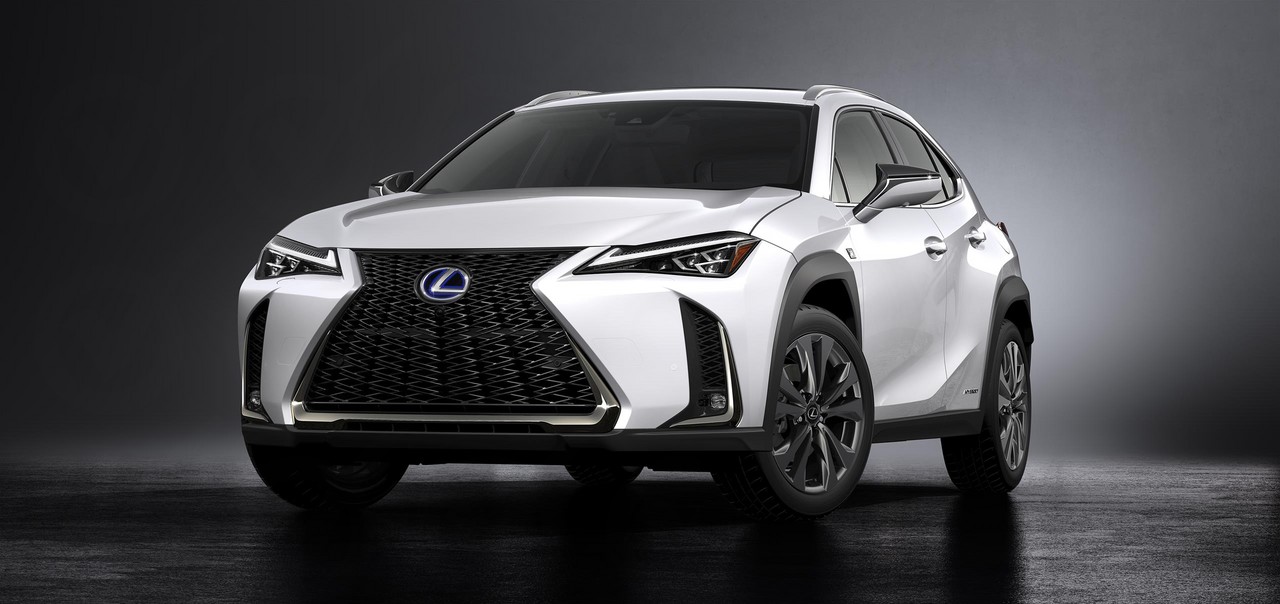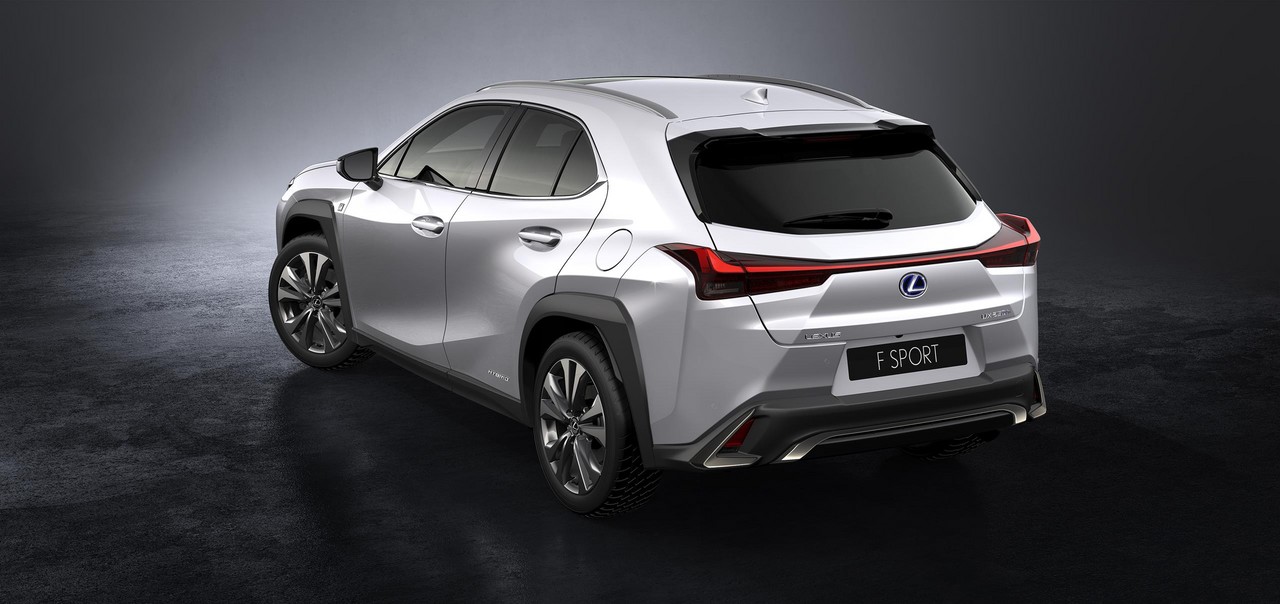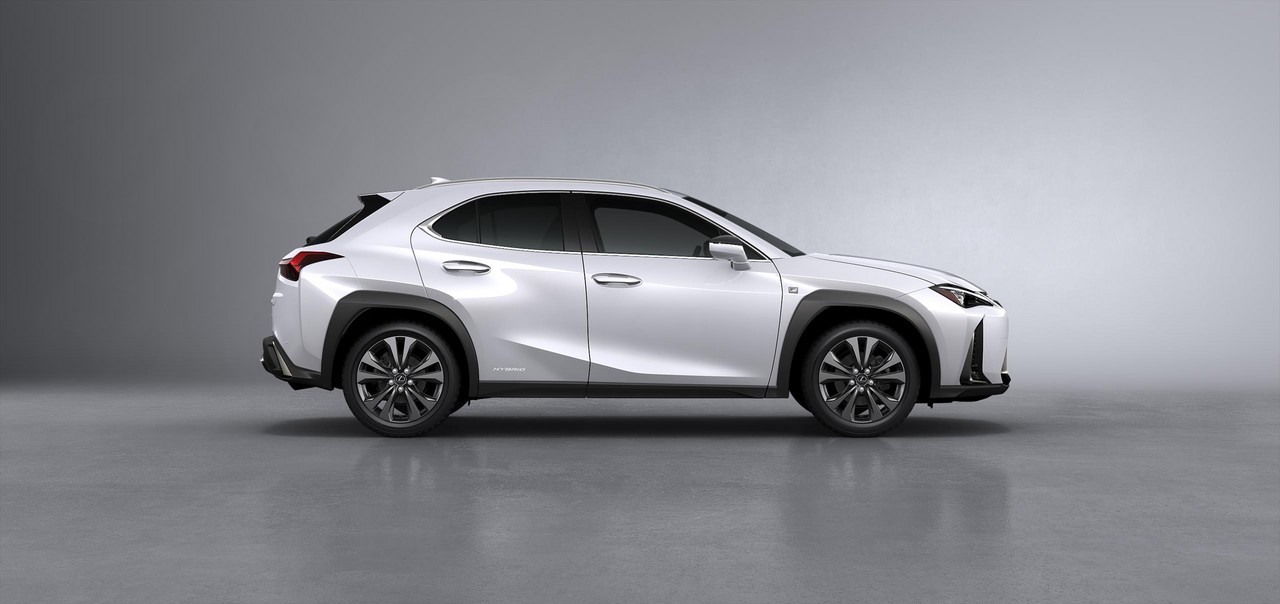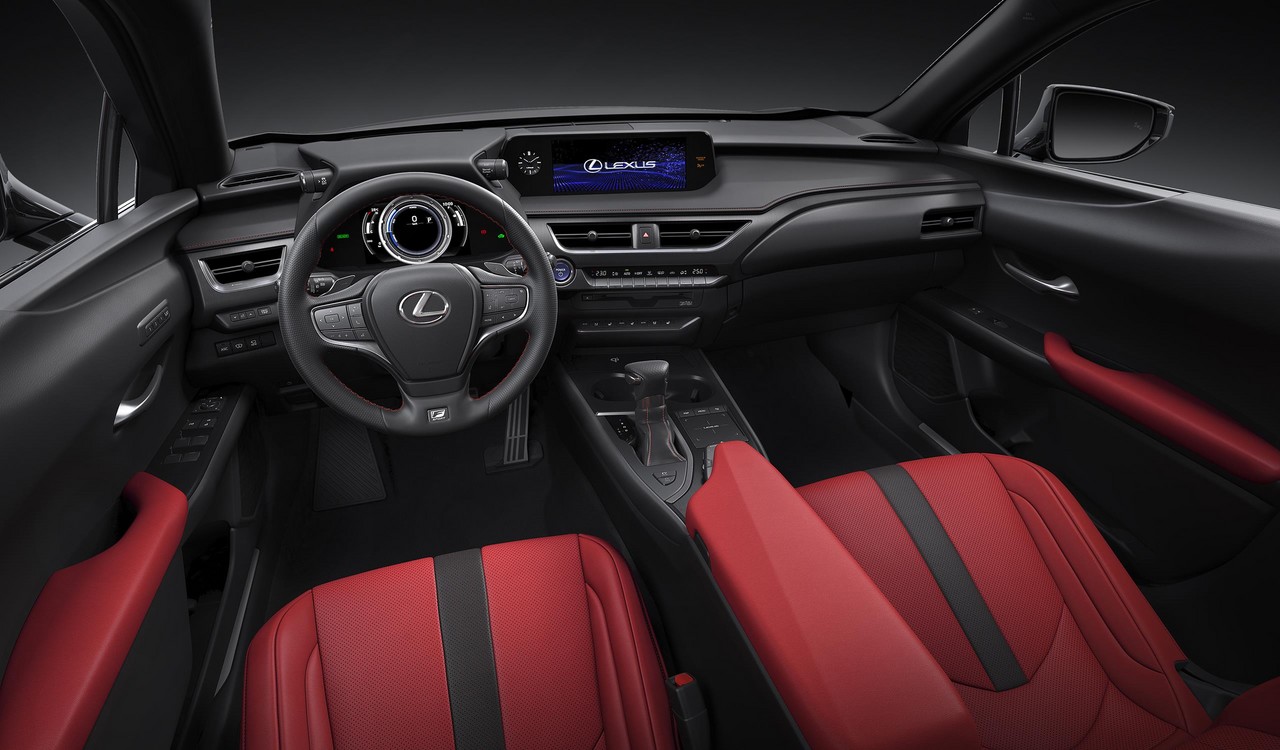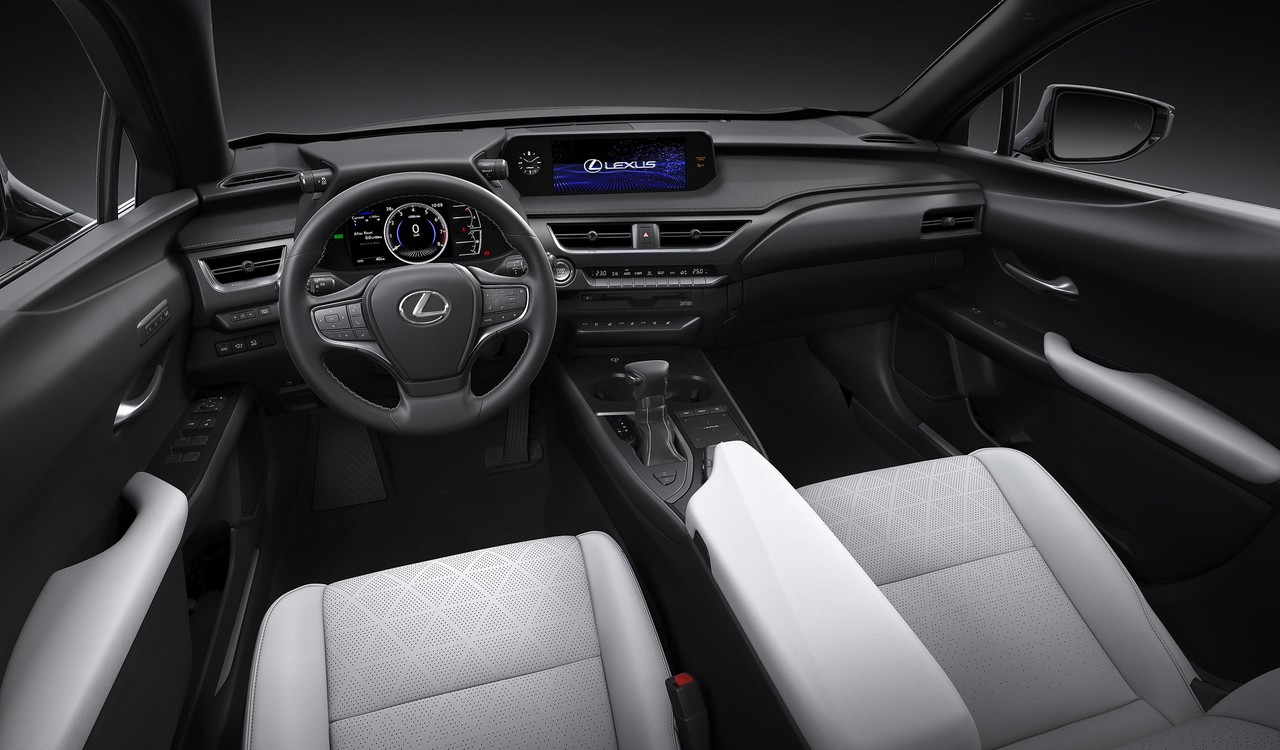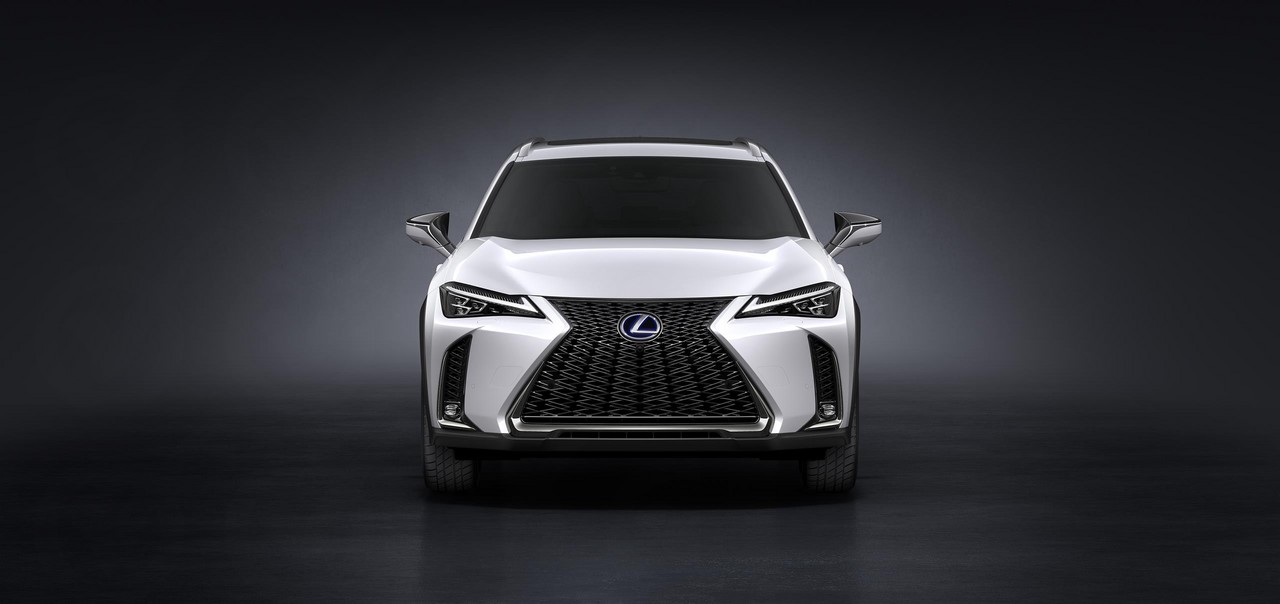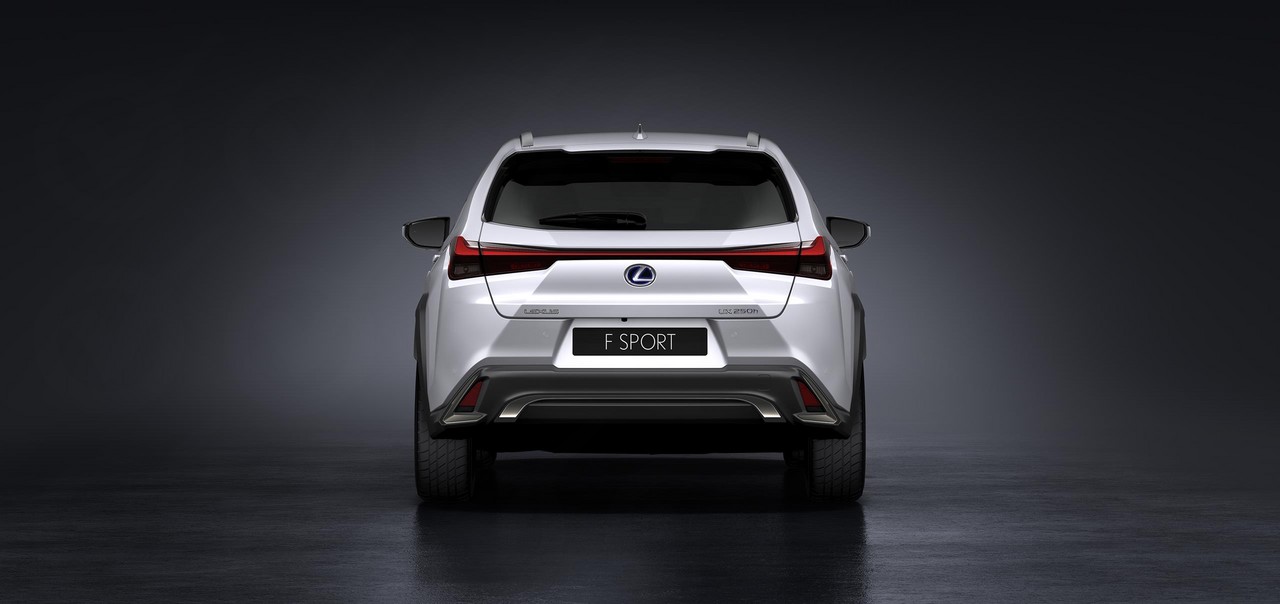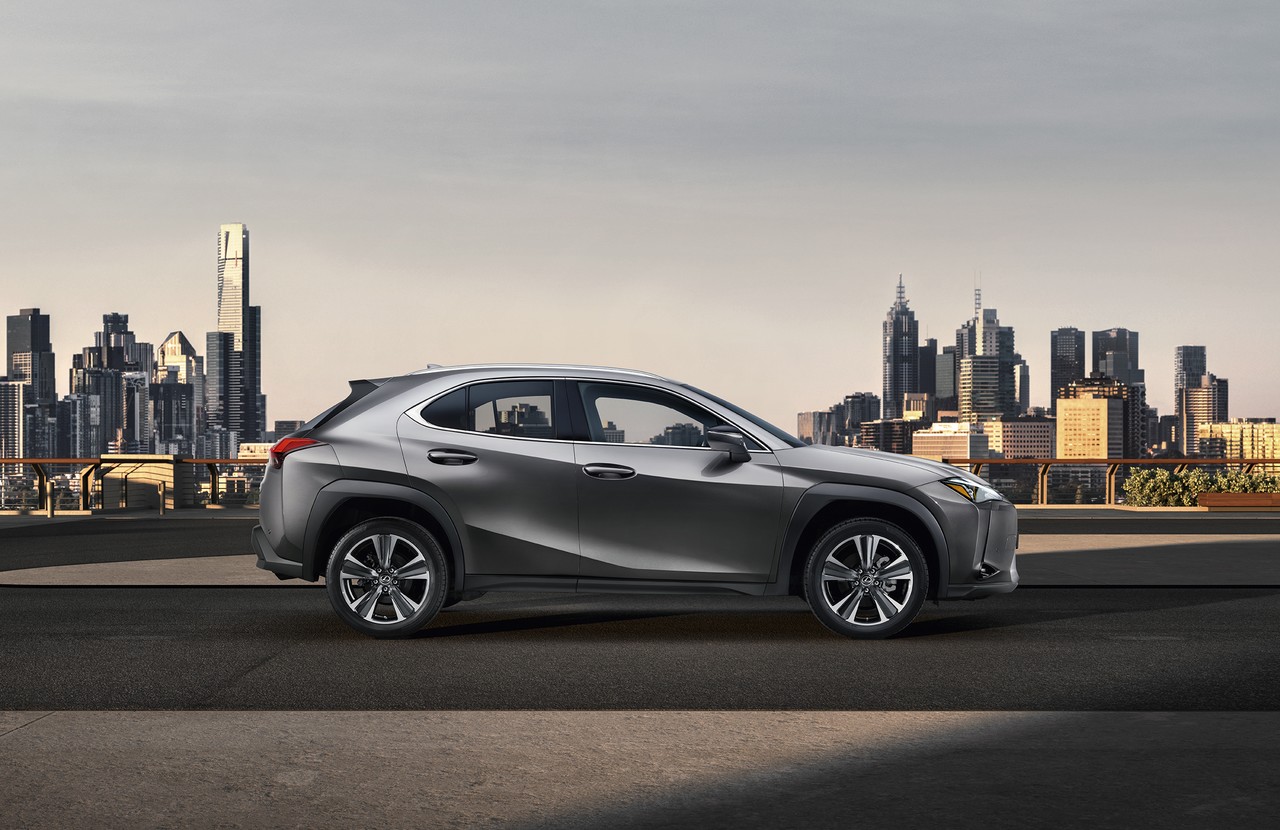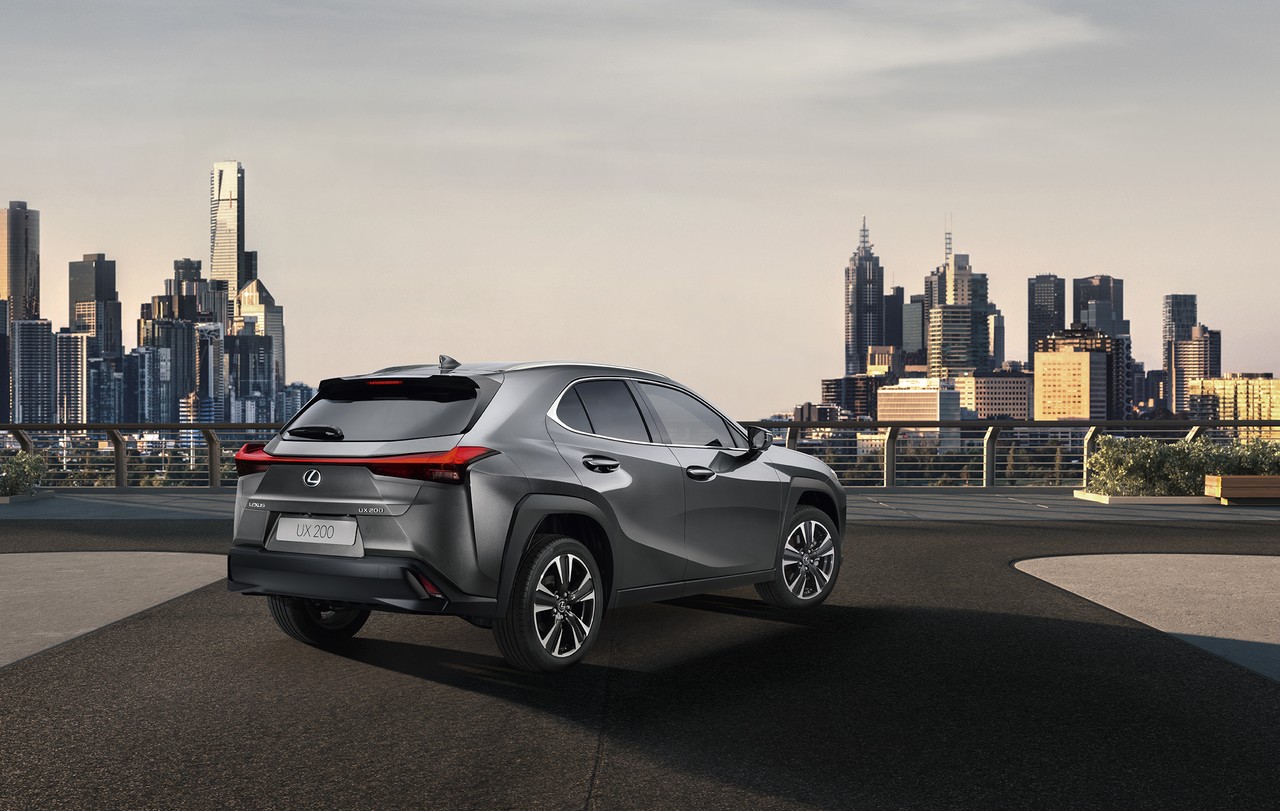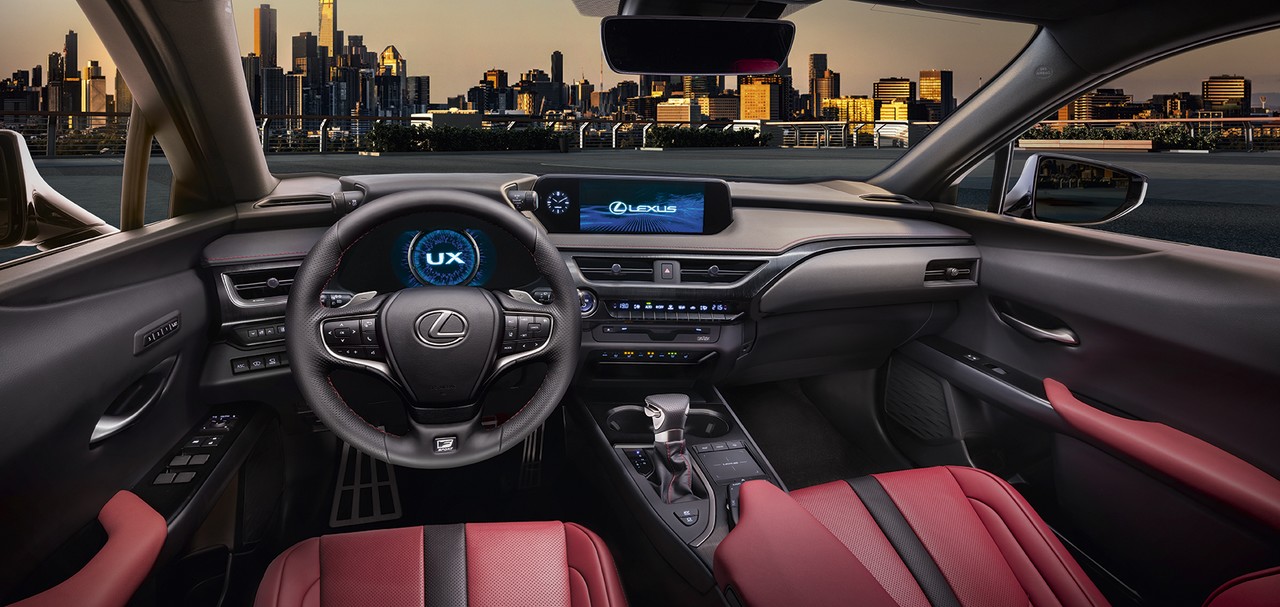
- Fuel-efficient M20A engines
- High standard of interior fit and finish
- Array of active safety technologies
- Rear headroom
- Poor rear visibility
- Lexus Remote Touch controller not intuitive to use
Overview
Released in Australia in November 2018, the Lexus UX – short for Urban Explorer – was a compact urban crossover. Manufactured at Lexus’ Kyushu factory in Japan, the Lexus UX range initially consisted of front-wheel drive UX 200 models, with the front- and all-wheel drive UX 250h following in January 2019.
Lexus UX 200: M20A-FKS engine
Shared with the Toyota E200 Corolla , the M20A-FKS engine for the Lexus UX 200 had an aluminium alloy cylinder block with 80.5 mm bores and a 97. 6 mm stroke for a capacity of 1987 cc. Beyond this, the aluminium alloy cylinder head had chain-driven double overhead camshafts (DOHC) and four valves per cylinder. For the intake valves, ‘VVT-iE’ camshaft timing used an electric motor to vary the valve timing controller for intake camshaft advance or retard. The exhaust camshaft, however, had a conventional hydraulic VVT-i system in which the camshaft timing oil control valve (OCV) controlled a spool valve so that hydraulic pressure could be applied to the advance or retard side of the VVT-i controller. In response, rotation of the VVT-i controller vane sub-assembly (relative to the timing chain sprocket) varied valve timing. The exhaust camshaft also had a mid-position lock mechanism.
The M20A-FKS engine had Toyota’s ‘D-4S’ fuel injection system which enabled it to use port injection or direct injection depending on running conditions. Finally, the M20A-FKS engine had a compression ratio of 13.0:1.
Lexus UX 250h: M20A-FXS engine and electric motor
For the Lexus UX 250h, the M20A engine could retard intake valve timing to use Atkinson cycle combustion and was therefore referred to as the M20A-FXS. The Lexus UX 250h combined the M20A-FXS engine with an electric motor that drew power from a nickel metal-hydride (NiMH) battery that was positioned beneath the rear seat. According to Lexus, the M20A-FXS engine had a maximum thermal efficiency of around 40 per cent.
| Engine | Trans. | Peak power | Peak torque | |
|---|---|---|---|---|
| UX 200 | 1987 cc M20A-FKS petrol I4 | 10sp CVT | 126 kW at 6600 rpm | 205 Nm at 4800 rpm |
| UX 250h | 1987 cc M20A-FXS petrol I4 | CVT | 107 kW at 6000 rpm | 188 Nm at 4400-5200 rpm |
| Electric motor | N/A | N/A | ||
| Combined | 131 kW | N/A | ||
UX 200: Continuously variable transmission (CVT)
Unlike a conventional CVT which used two pulleys connected by a belt, the ‘Direct Shift-CVT’ for the Lexus UX 200 had additional gears for acceleration from rest so that the pulleys and belt mechanism were not required ‘in the low gear range’. The Direct Shift-CVT then used a multi-plate wet clutch to switch power from the gear to the belt and pulleys.
Lexus UX 250h: E-Four all-wheel drive system
The Lexus UX 250h was available with an ‘E-Four’ all-wheel drive system in which an electric induction motor on the rear axle was used to drive the rear wheels. According to Lexus,
- Power distribution between the front and rear axles was ‘automatically optimised when accelerating, cornering or driving on slippery surfaces’; and,
- When a loss of front-wheel grip was detected, up to 80 per cent of the vehicle’s power – at speeds up to 70 km/h – could be directed to the rear wheels.
Body and dimensions
Like the Toyota C-HR and Toyota XW50 Prius , the Lexus X10 UX was underpinned by the GA-C platform which was a member of ‘Toyota New Global Architecture’ (TNGA). Compared to the Toyota C-HR, the Lexus X10 UX was 135 mm longer (at 4495 mm), 55 mm wider (1840 mm) and 45 mm lower (1520 mm), though wheelbase length was unchanged at 2640 mm.
Suspension and steering
The Lexus X10 UX had MacPherson strut front suspension and double wishbone rear suspension. As standard, the Lexus UX F Sport was equipped with Lexus’ Adaptive Variable Suspension (AVS) which consisted of electronically-controlled dampers that adjusted damping forces according to inputs from sensors measuring G-force, steering input, yaw rate and wheel speed. The UX F Sport also had ‘performance’ rear dampers.
The Lexus UX had rack-and-pinion steering with electric power assistance; its minimum turning circle was 10.4 metres.
Safety equipment
Standard safety equipment for the Lexus UX included dual front airbags, a driver and front passenger knee airbags, front seat-mounted side airbags, full-length curtain airbags (i.e. for front and rear occupants), ABS, electronic brake force distribution, brake assist, electronic stability control, traction control and front seatbelts with pre-tensioners and load limiters.
As standard, the Lexus UX was equipped with ‘Lexus Safety Sense +’ which consisted of the following safety technologies –
- Pre-Collision System (PCS) with Autonomous Emergency Braking (AEB): operating at speeds above 10 km/h, PCS used a front-mounted monocular camera sensor and millimetre-wave radar sensor to detect vehicles and pedestrians. According to Lexus, the system could recognise pedestrians at night and cyclists during the day. If there was a collision risk, the driver would receive an audible warning and an alert would be shown in the multi-information display. In its second stage, Pre-Collision Brake Assist prepared the braking system so that it would respond faster when the brake pedal was depressed. If the driver did not react and a collision was imminent, the brakes would be applied automatically to reduce vehicle speed and the severity of a collision;
- Radar Active Cruise Control (RACC): when cruise control was active, RACC used a millimetre-wave radar to detect vehicles ahead and determine their speed. As such, RACC could automatically adjust vehicle speed to maintain a safe distance to the vehicle ahead;
- Lane Departure Alert (LDA) with steering assist: used the windscreen-mounted camera to monitor the vehicle’s position relative to lane markings painted on the road surface. If the vehicle was about to depart from its lane without the turn indicator having been applied, a buzzer would alert the driver and a warning would illuminate on the multi-information display. If the vehicle continued to move outside the lane, light steering force would be applied to return the vehicle to its lane;
- Lane Tracing Assist (LTA): an extension of Lane Departure Warning, LTA monitored the path of the vehicle ahead where there were no road or lane lines that could be detected. As such, LTA could determine when the Lexus UX had deviated from the path of the vehicle ahead and may be in danger of leaving the road;
- Blind Spot Monitor (BSM): used rear radar sensors to detect vehicles in adjacent lanes as they moved into the driver’s blind spot. If detected, the driver was alerted by the illumination of LED warning indicators in the door mirror on the side of the Lexus UX where the vehicle was detected. If the driver operated the indicators to signal a move into an occupied lane, the LEDs would flash rapidly;
- Rear Cross Traffic Alert (RCTA): using the same radar sensors as the Blind Spot Monitor, RCTA could detect traffic approaching from either side of the Lexus UX when it reversed out of a parking space. Similarly, LEDs in the door mirrors would illuminate to warn the driver;
- Sway Warning System (SWS): could detect if the vehicle was drifting in its lane since this indicated that the driver may be fatigued. If detected, the driver would receive audible and visual warnings;
- Automatic High Beam: used the windscreen-mounted camera to detect the headlights of oncoming vehicles or traffic ahead and, if detected, automatically switched the headlights to low beam to avoid dazzling other road users. When the road was clear, the system reverted to high beams to enhance visibility; and,
- Traffic Sign Recognition: could interpret traffic sign information and present this information to the driver in the multi-information display.
Euro NCAP testing: Lexus X10 UX
In Euro NCAP testing , the Lexus X10 UX received a five star safety rating which included a 96 per cent adult occupant protection rating and an 85 per cent child occupant protection rating. In the frontal offset test, protection of the driver’s head, neck, thighs and feet were rated as good, though chest and lower leg protection were rated as adequate (i.e. a slight risk of serious injury). Furthermore, maximum points were awarded in the side impact and pole tests.
Wheels, tyres and brakes
The Lexus UX Luxury had 17-inch alloy wheels with 215/60 R17 96H tyres; the UX Sports Luxury and F Sport, however, had 18-inch alloy wheels with 225/50 RF18 95V tyres. Unique within the range, the UX Luxury had a temporary spare wheel.
The Lexus UX had 305 mm by 28 mm ventilated front brake discs and 281 mm by 12 mm solid rear discs.
Features: Lexus UX Luxury
The standard infotainment system for the Lexus UX consisted of a 10.3-inch touchscreen display, satellite navigation with SUNA live traffic updates, an eight speaker sound system with digital radio tuner (DAB), MP3/WMA compatibility and an in-dash DVD player, Bluetooth mobile phone connectivity and two USB ports.
Beyond this, standard features for the Lexus UX Luxury included climate control air conditioning, ‘Nulux’ interior trim, a ten-way power adjustable driver’s seat, an eight-way power adjustable front passenger seat, heated front seats, bi-beam LED headlights, LED daytime running lights, LED fog lamps, front and rear parking sensors, a rear view camera with dynamic guidelines (‘Parking Assist Monitor’), a leather-accented steering wheel, remote central locking with proximity key, power adjustable and heated door mirrors with folding function, power windows, power adjustable tilt and telescopic steering wheel adjustment, an electric park brake, push-button start, a seven-inch TFT multi-information display, illuminated vanity mirrors, tyre pressure monitoring, roof rails, a trip computer and an immobiliser.
Features: Lexus UX F Sport
Compared to the Lexus UX Luxury, the UX F Sport and Sports Luxury were further equipped with leather-accented seats, ventilated front seats, three-eye bi-beam LED headlights with cleaners, wireless mobile phone charger, hands-free tailgate operation, driver’s seat memory settings and rear privacy glass.
Unique within the range, the Lexus UX F Sport was distinguished by its F Sport bumpers and mesh grille, sports seats, eight-inch TFT multi-information display and ‘Active Sound Control’ (ASC). According to Lexus, Active Sound Control ‘enhances the engine sound, recreating upshifting and downshifting sensations that evoke a geared automatic transmission to provide audible feedback of the vehicle’s response to driver operation’.
Features: Lexus UX Sports Luxury
The range-topping Lexus UX Sports Luxury was distinguished by its:
- Mark Levinson surround sound system with thirteen (13) speakers;
- Panoramic View Monitor which combined images from four video cameras to provide a 360 degree bird’s-eye view of the vehicle and its surrounds; and,
- Adaptive High-Beam System (AHS) which could detect the headlamps of oncoming vehicles and tail lamps of preceding vehicles. If other vehicles were detected, AHS would selectively disable the LEDs in the headlight units so that they did not directly project onto a preceding or oncoming vehicle.
Brochure
